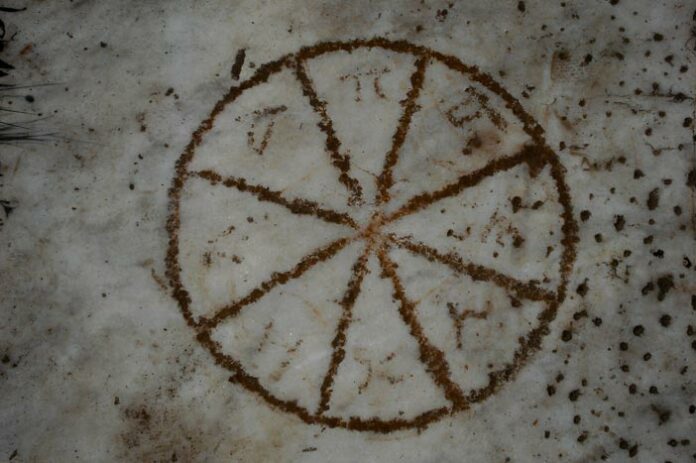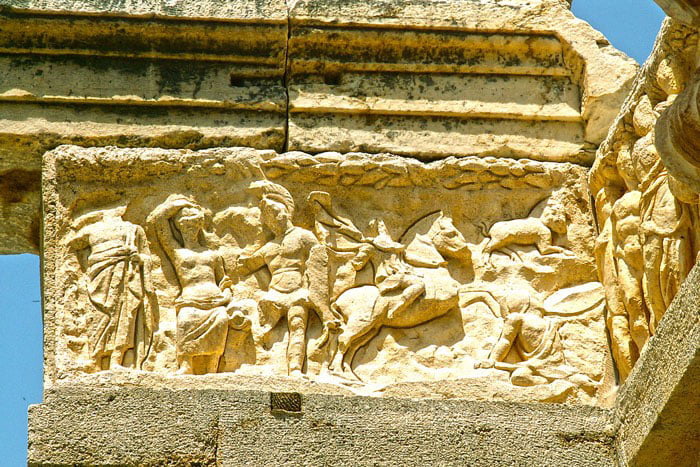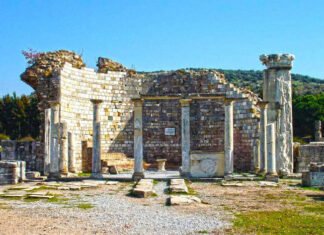Ephesus Guide – Religious Symbols in Ephesus
Discover the spiritual history of Ephesus with a knowledgeable Ephesus guide. Ephesus is a place where different religions have lived together for centuries. The ancient city holds many symbols of Christianity and Judaism that show us its deep religious past.
Jewish communities lived in Turkey for thousands of years. When St. Paul arrived in Ephesus, around 10,000 Jews had already lived there for centuries. The Book of Acts also mentions the Jewish community and a synagogue in Ephesus.
In Hellenistic times, Jews were granted citizenship and were free from military service. The Romans allowed people to follow their religion as long as they obeyed the law and paid taxes. This tolerance helped Ephesus become a religious center for different beliefs.
Explore this diverse history on our Ephesus day tours.
Ephesus Guide – Jewish Symbols in Ephesus
The Jewish synagogue is believed to be near the Celsus Library, but it has not been uncovered yet. In the nearby Church of Mary, an old inscription suggests that a synagogue stood close by. A small glass bottle with a menorah was also found, supporting this belief.
Jewish symbols like the etrog (a citrus fruit), menorah, and lulav (palm branch) have religious meaning. The menorah is a seven-branched lamp that stands for wisdom. The etrog represents the heart, and the lulav the spine. These items were likely used to recognize other Jews and create unity.
A carving near the Celsus Library shows a menorah, an etrog, and a lulav. Another etrog is carved near the famous footprint in Ephesus. These carvings show that the Jewish community lived in Ephesus and left their mark on the city.
Learn about more hidden details on private guided Turkey tours.
Ephesus Guide – Christian Symbols in Ephesus
Ephesus also holds many Christian symbols. One important sign is the fish symbol, also called the Jesus Fish. Many apostles were fishermen, and fish appear often in the Bible. Early Christians used this symbol to recognize each other during times of danger.
They would draw a curved line in the dust. If another person was Christian, they would complete the fish shape. This was a secret way to identify fellow believers.

In Ephesus, another early symbol is found—the Christian Wheel. It comes from the Greek word IXOYE, meaning fish. Each letter also stands for a phrase:
- I – Jesus, X – Christ, O – God, Y – Son, E – Savior
The letters were arranged to form a wheel shape. To strangers, it looked like a normal wheel. But to Christians, it had deep meaning. These symbols were carved into stones to guide Christians to safe places.
Ephesus Guide – Why These Symbols Matter
These religious carvings and items are more than decorations. They are clues about the people who once lived in Ephesus. The symbols helped them worship, stay safe, and connect with others who shared their faith.
Explore these symbols and many more with our Ephesus day tours. Walk through the streets where ancient Jewish and Christian people lived, prayed, and left behind their stories.
Book now or contact us to start your journey with a professional Ephesus guide.
Discover hidden carvings from Jewish and Christian history. Learn how early believers lived and worshipped. Understand the meaning behind religious symbols. Walk with a certified Ephesus guide who shares local stories.
Also explore our personal tours Bulgaria and private guided Turkey tours for more unique travel experiences.




